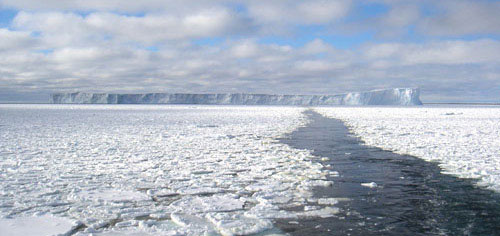
在過去幾年,全球增溫已使得世界各地陸續受到不同的災害衝擊,科學家警告,暖化現象將觸發全球性的災難,如表1所示,氣溫上升愈多,災難將愈嚴重。例如,溫度上升1.7 ~ 2.7oC,格陵蘭冰床的崩解將會造成海平面上升幅度高達7公尺,約23英呎(一說6.6公尺)。
科學證據指出,當全球增溫幅度大於工業革命前2℃(華氏3.6度;亦即較今高於華氏2.2度),全球性的衝擊將會大幅地增加。幸運的是,我們還有機會可以避免面臨這樣的衝擊。
工業革命以來,地球增溫幅度已接近0.8℃(華氏1.4度)。而由人類活動產生的溫室氣體,將持續存在於大氣中,並將維持數十個世紀。因此,我們必須迅速控制溫室氣體排放量,以避免全球增溫幅度高於2℃。
我們有幾種不同的方式可以達到這一個目標。一項研究(註1註2)表示,有50%(註3)的可能性可以將全球增溫幅度低於2℃之內:即大氣中的二氧化碳濃度控制在450-500ppm的範圍之內(註4),達到這項目標需控制:
- 溫室氣體排放量於2015年左右為最顛峰時期;
- 在2020年之前,工業化國家總排放量,需較1990年的水準低25% ~ 40%;
- 在2050年之前,全球總排放量需比1990年的水準降低50%;
- 在2050年之後,持續降低溫室氣體排放量。
| 高於工業革命前溫度(℃) | 衝擊 |
|---|---|
| ≦1 | 區域性糧食減產(註5)。 |
| 1-2 | 北極圈、高山地區及其他易受危害生態系統的嚴重破壞(註6)。珊瑚礁的大量死亡(註7)。 |
| 1.5-3.5 | 高達30%的物種面臨絕種風險(註8)。 |
| 1.7-2.7 | 格陵蘭冰川不可復原的崩解,導致海平面上升7公尺,人口稠密的沿海地區將遭淹沒(註9)。 |
| 2-3.5 | 溫鹽環流的可能瓦解(註10)。 |
| 2.5 | 北極圈夏季浮冰徹底消失(註11),傳統狩獵社群崩解,北極熊及其他依賴”冰”生存的物種可能絕種。 |
| 2.7-3.7 | 西南極冰川不可復原的崩解(註12),海平面將再上升4-6公尺。 |
此外,根據最新研究顯示,與工業革命前相比,如果全球平均溫升超過2°C或更多,將會產生危險的不可恢復影響尚包括(註13):
- 水資源短缺:全球會有30億人面臨水資源短缺的威脅。印度正在融化的冰川預計就會導致5億人以及37%的土地灌溉用水短缺。
- 糧食安全:在非洲和其他地區頻繁發生的乾旱,將導致農作物產量降低。由於蒸發量增加,穀物產量下降區域會從熱帶地區蔓延至中緯度以及溫帶地區。
- 健康影響:3億人會面臨瘧疾和水媒傳染病的更嚴重威脅。到2020年,氣候變化導致的健康成本將倍增,氣候炎熱是部份原因,更主要是因為低收入國家的腹瀉和營養不良問題日漸嚴峻。
- 社會經濟影響:在中等溫升情景下,社會經濟損失的初始預測顯示,GDP損失很少,只降低幾個百分點。而如果不採取任何措施減氣候變化,全球淨損失將達到20%。如果提早採取減緩措施,應對氣候變化的成本則會低得多。
- 生態系統影響:到2050年,35%的陸生物種將滅絕或瀕臨滅絕;包括一些獨特的生態系統/物種。
資料來源:
- Meinshausen, M. 2006. What does a 2°C target mean for greenhouse gas concentrations? A brief analysis based on multigas emission pathways and several climate sensitivity uncertainty estimates. In: H.J. Schellnhuber et al. (eds.), Avoiding Dangerous Climate Change, pp. 265-280. Cambridge: Cambridge Univ. Press.
- Den Elzen, M., and M. Meinshausen. 2006. Multi-gas emission pathways for meeting the EU 2°C climate target. In: H. J. Schellnhuber et al. (eds.), Avoiding Dangerous Climate Change, pp. 299-309. Cambridge Univ. Press.
- This accounts for uncertainty in the sensitivity of the climate system to an increase in greenhouse gases, as well as some lesser uncertainties.
- The current concentration is roughly 380 ppm equivalent CO2, if the cooling effect of human-produced aerosol particles is accounted for.
- Heij, B. 2005. Limits to Warming: In Search of Targets for Global Climate Change. Bilthoven: Nertherlands Environmental Assessment Agency.
- Heij, 2005; ACIA. 2004. Impacts of a Warming Arctic: Arctic Climate Impact Assessment. Cambridge University Press.
- O’Neill, B. C., and M. Oppenheimer. 2002. Dangerous climate impacts and the Kyoto Protocol. Science 296: 1971-1972.
- IPCC, 2007 (Working Group II)
- Gregory, J. M, Huybrechts, P., and S. C. B. Raper. 2004. Threatened loss of the Greenland ice-sheet. Nature 428: 616.; Heij, 2005
- O’Neill and Oppenheimer, 2002 and references therein
- ACIA, 2004; Johannessen, O. M., Bengtsson, L., Miles, M. W., Kuzmina, S. I., Semenov, V. A., Genrikh, V. A., Nagurnyi, A. P., Zakharov, L. P., Petterson, L. H., Hasselmann, K., and H. P. Cattle. 2004. Arctic climate change observed and modeled temperature and sea-ice variability. Tellus A56: 328-341.; Lindsay, R. W., and J. Zhang. 2005. The thinning of Arctic sea ice, 1988-2003: Have we passed a tipping point? Journal of Climate 18 (22): 4879-4894.
- Oppenheimer, M. 1998. Global warming and the stability of the West Antarctic Ice Sheet. Nature 393: 325-332.
- WWF, 2007. 氣候變化解決方案:WWF 2050展望.

Source: The National Snow and Ice Data Center








